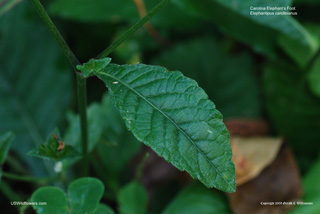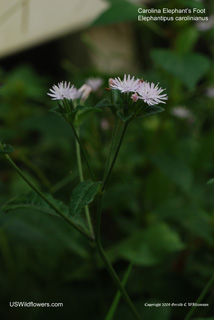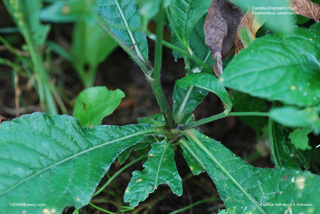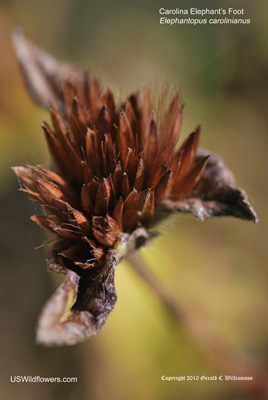Wildflowers of the United States | |||||||||||||
| |||||||||||||
Elephantopus carolinianus - Carolina Elephant's foot, Leafy Elephantfoot . This plant's alternating leaves arise along an unevenly pubescent stem. The plant branches at leaf axils usually after four non-branching leaf nodes. The blossom clusters, which arise from three leafy bracts, terminate the stems. The white to pale lavender blossoms are very interesting in that they usually give the appearance of having a circle of many rays, but these apparently lobes of the corolla of several disk flowers. | E. carolinianus is listed as endangered in New Jersey and Pennsylvania (USDA.) Synonyms: Elephantopus flexuosus, Elephantopus violaceus, Elephantopus glaber Leave comments on Elephantopus carolinianus at this link. Check here for more information about Elephantopus carolinianus.   Blue=Native; Grey=Introduced Map from USDA Plants Database: USDA, NRCS. 2017. The PLANTS Database (http://plants.usda.gov, 08 May 2025). National Plant Data Team, Greensboro, NC 27401-4901 USA. Search Our Database: Enter any portion of the Scientific, Common Name, or both. Do a general Google search of the entire site: #ad #ad
|
| #ad
| | |||||||||
|
Commercial / Cookie Notice Looking for Wildflowers for a specific state? Check here: | |||||||||||||
|
| |||||||||||||





